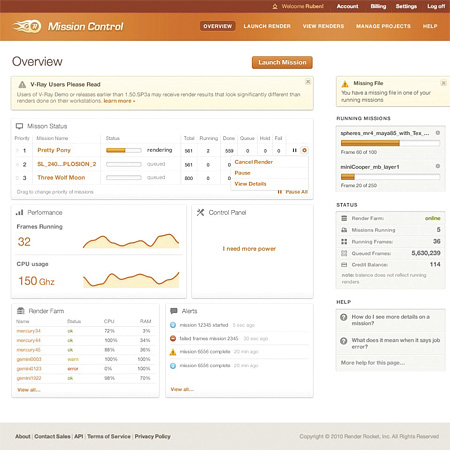Collaboration in the Cloud
SEATTLE—The "cloud," as the collection of Internet-accessible data centers collectively are called, is well known as a repository for storage and retrieval of file-based material. But in addition to static storage, the cloud contains tremendous computing power, of which a growing number of film and television production service providers are taking advantage.
Long-time television graphics device maker Chyron has had a cloud-based graphics system, Axis World Graphics, on the market for four years. Calling on data such as graphs, stock quotes, still images, maps, satellite images and such stored out in the cloud, "you can collaborate between different shows at one station, or collaborate with producers all around the world," said Todd Martin, senior vice president of Chyron's Strategic Solutions Group.
Journalists working from their PC in the newsroom or out in the field can import those elements into station- and show-specific templates, so the same content will have the graphic look of a specific show.
Martin said that as Chyron has kept an ear to the ground, "you hear the market talking, and you see that social [media] is getting bigger and bigger, so we try to meet that need and provide advanced solutions that will help the fulfill those needs." The result is Chyron's Engage, a new social media platform. "It's a simple and cost-effective way for news, sports and entertainment producers to create rich viewer polls and campaigns, as well as moderate tweets and things like that, quickly and efficiently for their live television shows," Martin said.
STAYING PUT

Render Rocket’s ‘Mission Control’ Dashboard allows customers to track their content in the cloud. Aframe, a London-based developer of cloud-based video production tools, uses the cloud as a collaboration platform for media projects, according to CEO David Peto. "You start with a movie, television show, corporate video or what-have you, and it lets you build a team, like adding your friends on Facebook." With the media files in the cloud, Aframe's system allows a group of individuals in far-flung locations to watch footage individually or collectively, and comment on it live. Comments are attached to the relevant piece of video.
Peto contrasts this with flying collaborators in to a central local location for a viewing session. "These large media files normally are a nightmare to watch," he said. "You have to sit around one computer, in the same office, to see."
In the cloud, Afame's system accepts video in the resolution in which it is shot and allows editors to rough-cut the video during collaborations. And in addition to video, documents like scripts, shooting schedules and the like can be placed in the cloud to provide access for all collaborators.
"It's a completely new way that professional video is created," said Peto, citing a BBC project in which Aframe is taking part, involving 700 hours of raw video and 30 individuals accessing and collaborating.
Avid has just introduced a cloud-based edit system in response to a plea from news executive at local stations. "A lot of our customers have been telling us they want to get more of their journalists out in the field where the news is breaking," said Dana Ruzicka, vice president of segment and product marketing at Avid in Burlington, Mass., "and they can't always afford to have a remote truck and all of that rolling with every story.
"With Avid's Interplay Sphere, the journalist can have full connectivity to the newsroom, including access to media back at the newsroom and all the systems back in the newsroom, in addition to anything they've captured locally," Ruzicka continued. "So it's basically bringing the newsroom with them on location."
One big advantage that Ruzicka cited is that very little of the processing goes on in the laptop being utilized in the field. "In terms of preparing media to go to air, and transcoding for prep, anything that needs to happen to package it up, all of the heavy lifting is going on back at the station," he said. "And we've made it really easy, push-button-simple, to upload the final package back to the newsroom, and it can go right to air."
RETAIL RENDERING
There was a time when nonlinear editing required long rendering times to finish even the simplest edit. High horsepower workstations have put that in the past, but rendering high-resolution animations and complicated effects still requires a lot of computing power. To speed up the task, deep pocketed studios have installed render farms, scaling out to hundreds of servers to divide the task and speed it up.
Companies like Render Rocket sell rendering services in the cloud at data centers. "We take the complex and make it pretty easy," said Tracey Farrar, vice president of sale and marketing at the Sherman Oaks, Calif.-based company. "We have this interface called 'Mission Control' where an individual or studio can submit their content, source files, through the Web and into our system."
Render Rocket provides the render farm, and licenses the software (and support the three top animation applications). The selling point is true cloud-computing marketing-speak. The customer only pays for the time he uses, gets no power bill for running the servers and air conditioning, and sees no maintenance bill.
Farrar said customers not in too much of a hurry can save money. "On our low-priority rendering, we can save a customer an additional 20 percent," he said.
The professional video industry's #1 source for news, trends and product and tech information. Sign up below.
